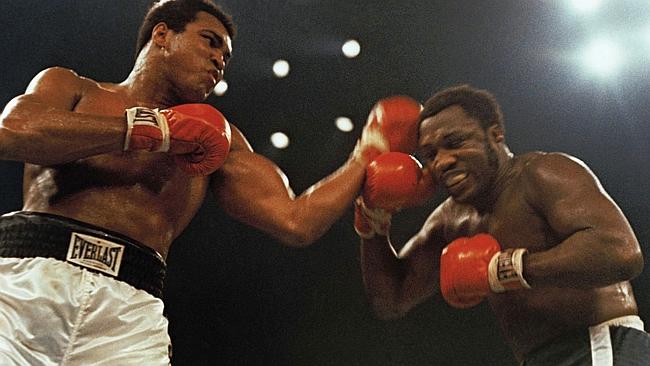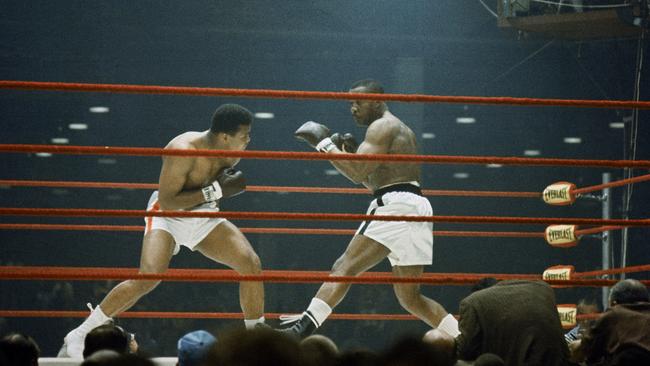Richie Benaud, cricket captain and commentator, has died aged 84
Richie Benaud, batsman, bowler, captain and commentator, died in April. Here is our tribute to the master of understatement.
By Graeme Leech
Richie Benaud. Test cricketer and commentator. Born Penrith, NSW, October 6, 1930. Died April 10, 2015, aged 84.
For so long a fixture as a cricket commentator on television, it is sometimes forgotten that Richie Benaud was one of Australia’s most successful Test captains and a leading allrounder who was the first man to complete the 2000-run, 200-wicket double.
His lasting achievement was his leadership of Australia to Ashes triumphs against England in 1958-59, 1961 and 1962-63. He never lost a series as captain. And as a commentator, he never lost his interest in cricket.
After retirement he worked as a newspaper journalist and as a commentator for the British Broadcasting Corporation and the Nine Network, a career that spanned more than 40 years.
Benaud was the master of the understatement, much parodied but never in a disrespectful manner. His familiar tones gave listeners and viewers a sense of peaceful continuity — the sound of summer in the mould of legendary cricketing voices such as English radioman John Arlott and the Australian devotee, Alan McGilvray.
Benaud was the first of two sons to Lou Benaud, a teacher with French ancestry, and Rene Saville from a family of pioneering dairy farmers in northern NSW. Lou was a keen cricketer at first-grade level in Sydney and in the country, and young Benaud was often at the ground absorbing cricket’s culture.
His first visit to the SCG in 1940, where NSW played a Sheffield Shield match against South Australia, stirred an urge to bowl leg-breaks. The sight of Test bowlers Clarrie Grimmett and Bill O’Reilly left him wide-eyed and ambitious.
He passed an exam enabling entry to Parramatta High School where he captained sides from fourth-grade upwards and also played for the Cumberland club’s lower grades. At 16, the year he left school with a “sportman’s pass”, Benaud was selected for first-grade (he played in the same side as his father) and NSW colts soon after.
He worked in a chartered accountant’s city office, apparently under something of an illusion that he was good at mental arithmetic, while devoting all his spare time to cricket — including winter net practice.
Early in Benaud’s career, it was his batting that won his place in Cumberland firsts. His leg-spin bowling was still an invitation for batsmen to heave his deliveries all around the ground.
But his batting let him down when playing for the NSW 2nd XI (he had already made his debut for the state’s Sheffield Shield side) against Victoria in 1949 when he misjudged a short-pitched ball. Going for the hook, the ball rose head-high and collected Benaud on the forehead. He was carried off on a stretcher.
The seriousness of the injury was not immediately realised, but when he returned to Sydney, specialists found a shattered skull-bone that required surgery. Benaud was lucky he wasn’t killed.
He returned to the crease the following summer and one of the first deliveries he faced in a first-grade match was short. He hooked it to the boundary, settling any lingering doubts about his readiness for the physical threat posed by fast bowling.
Having lost his job at the accounting firm, he doubled his salary as a clerk at The Sun afternoon newspaper where he was able to work flexible hours to fit in with cricket commitments.
The 1951-52 season gave Benaud the chance to catch the Australian selectors’ eyes. He scored well without being prolific and took some key wickets. He made his first Shield century against South Australia and was rewarded with a place in the final Test against West Indies in Sydney. His returns were modest, but he was on his way at the elite level.
When South Africa toured in 1952-53, Benaud planned to marry Marcia between the third and fourth Tests, but during the third he was hit in the mouth fielding at close-in gully. Being hit in the mouth was one of “the luckiest things which ever happened to me”, he wrote in his autobiography.
His reasoning was that anywhere else on the head could have caused serious injury, but because it was the mouth — he had lost all his teeth due to calcium deficiency when he was 15 — all he needed was a repair job on his dentures which had been shattered into 27 pieces. The wedding went ahead with Benaud sporting a plaster on a cut lip. And he played in the fourth Test.
At the end of the 1953 Ashes tour of England — won by the home side — Benaud had a meal and a couple of beers with Australian leg-spin bowling legend Bill O’Reilly who passed on advice that formed the basis of Benaud’s bowling for the next 10 years.
Benaud knew that he needed good advice because he also knew that he needed to produce better bowling figures — his Test performances against England had been disastrous.
England’s tour of Australia in 1954-55 did little to enhance the rebirth of Australian cricket. England speedsters Frank Tyson and Brian Statham crushed Australia’s batsmen, although Benaud had a reasonable series with the bat. He had been a first-class cricketer for seven years and had played in two Ashes series, yet he had experienced victory only once.
Touring in those days was long and arduous. Players were away from home for months, including lengthy sea voyages. The tour of West Indies in 1955 took Benaud away from Marcia and newborn Greg for five months. His long absences — wives were not allowed to accompany husbands on tour in those days — contributed to their marriage breakdown in 1965.
GALLERY: The life of Richie Benaud
Almost as if he was in a hurry to go home, Benaud scored the fastest Test century for 52 years — 121 in 78 minutes batting at eight — in the fifth Test at Kingston, Jamaica. The series was won by Australia.
Back to England in 1956 for another Ashes defeat, Benaud found himself one of the targets for writer Neville Cardus who cast an elegant eye over the Australian’s mediocre performances in England, concluding that if Benaud had been English the selectors would not have been so patient.
Benaud may have been stung because Cardus later watched him in the nets, “defending seriously, scrupulously behind the ball; and his strokes, when he liberated them, were clean, true, strong. His reactions were swift and natural. Benaud is 25 and looks every inch a cricketer. It will be no matter for wonder if at any moment he confounds those of his critics who have more or less written him off.”
The series included Jim Laker’s Test at Old Trafford where he took 19 wickets to thrash Australia; a couple of disgraceful pitches; and what Benaud described as a turning point in his career — second in the batting averages and some decent bowling returns.
On his return to Australia, Benaud transferred to the editorial department of The Sun working on police rounds. But the after-effects of dengue fever contracted in Pakistan on the way back from England left him struggling for runs.
On the other hand, his bowling began to improve after he found a way of toughening the skin on his fingers which had suffered continuous rips and tears from the ball’s seam as he imparted spin on delivery. He was halfway through his Test career; the second half was to be the more fruitful.
In South Africa in 1957-58, he had his best batting in a series with two centuries, and also took 25 wickets to help give Australia a comfortable 3-0 win.
Just around the corner was the return of the Ashes and the Australian captaincy. When captain Ian Craig fell ill, and with Neil Harvey overlooked after leaving Victoria for NSW, the selectors went for Benaud, despite his limited experience as NSW captain.
England played slow, dull cricket. In the first Test, Trevor Bailey scored 40 off 426 balls; Colin Cowdrey scored the slowest century in Ashes history. But the Australians were not too bothered and outplayed the English who seemed to lack motivation. Benaud excelled with his captaincy and as a player.
The freshly resurgent Australians were primed for the visit of the West Indies in 1960, a tour that created the famous tied Test in Brisbane and a world record crowd of 90,800 in Melbourne. Australia won one of the greatest series and Benaud’s reputation for positive captaincy was sealed.
Retaining the Ashes in England in 1961 was arguably the peak of Benaud’s cricketing life. The Australians played bright cricket and Benaud proved to be more tactically astute than his English counterpart. Wisden said: “The tour was a personal triumph for Richie Benaud, possibly the most popular captain of any overseas team to come to Great Britain.”
Australia comfortably beat England again in 1962-63, but Benaud was thinking of his future. He was already writing a column for the London Sunday newspaper The News of the World and was writing sport for The Sun in Sydney. He had done some stints as a commentator for the BBC and knew this was his future.
He reached the 2000-run milestone at Brisbane against South Africa but later that season broke a finger trying to take a catch off Doug Walters in a grade game. Bob Simpson stepped in as Australia captain and Benaud played his last first-class game against South Australia: he made 76 and 120 not out and took five wickets.
In 63 Tests, Benaud scored 2201 runs at 24.46 and took 248 wickets at 27.03. He was Australia’s leading wicket-taker until Dennis Lillee bettered the mark — eventually reaching 355.
He spent more than 40 years behind the microphone until the fifth and final Test match between England and Australia at The Oval in 2005 — when England regained the Ashes lost to Allan Border’s side in 1989.
After that series he quit commentating in England but continued with the Nine Network in Australia.
He married Daphne in 1967.


